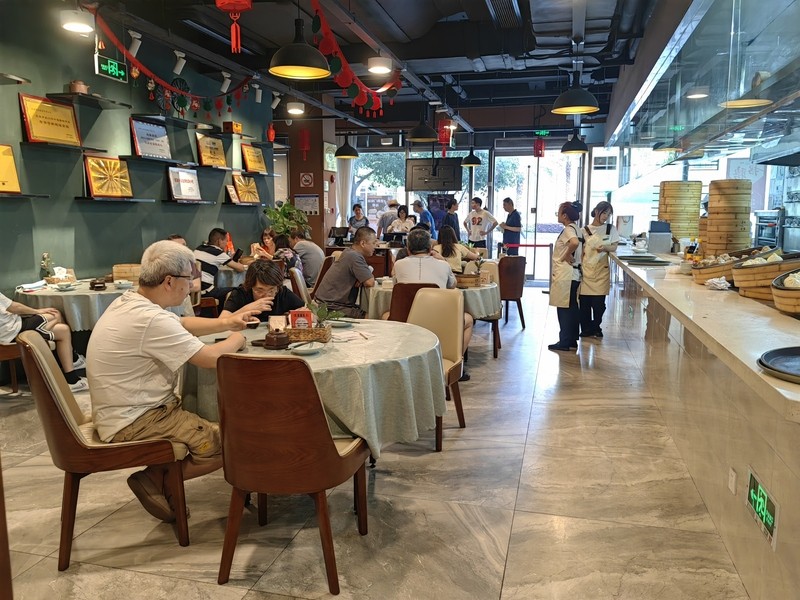Where does the "driving force" of circular economy come from?, Become a hot seller! In Shanghai, "waste" recycled materials | garbage | popular goods
What is the next step in garbage classification? It's about turning waste into treasure, it's about the resource utilization of garbage.
In fact, almost all recycled materials in China have a complete supply chain, but they also face the same demand: more accurate and efficient garbage classification.
As a new fashion, garbage classification is not only a way of life and an expression of attitude, but also needs to rely on a circular economy to form a closed loop between consumption and production. Therefore, from the perspective of sustainable consumption markets and recycling enterprises, we may find more insights into garbage classification.
Recycled goods, who is paying the bill
On June 10th, on Baoqing Road in Xuhui District, a store called 3RLABS was bustling with people, making it the first commercial space in Shanghai to specialize in sustainable consumer goods. The 3R in the store name is the abbreviation for the three principles of circular economy - reduction, reuse, and recycling.
On the left side of the entrance to the store, a device called "Green Barrier" attracts attention. In the green grid, plastic waste that has been colored is piled up together, forming a "green wall" that attracts many young people to stop and take photos.
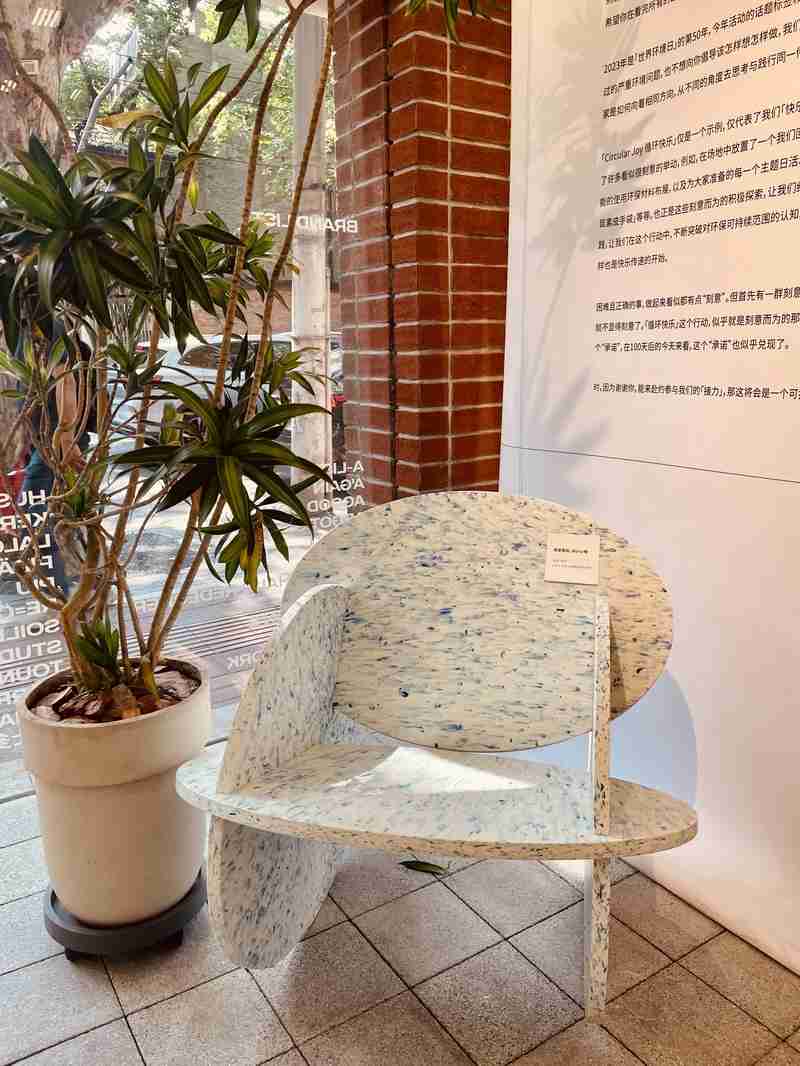
Next to this "green wall" is a chair with a unique design, with a white background mixed with distinct blue patterns, which is very aesthetically pleasing. This chair comes from a Shanghai brand called "Shuyu" and is 100% made of discarded plastic products.
3RLABS brings together products from over 30 sustainable brands both domestically and internationally, covering various fields such as home living, accessory bags, fragrance and personal care. Among them, sustainable brands in China account for about one-third.
On the shelves, there are colorful patterned handbags made of recycled nylon from the American brand Baggu, PLA vases made from plant sources from Argot in Paris, France, and aromatherapy made from recycled coffee grounds from A'GAIN in Shanghai
On the other side of the product area, a movable shelf separates an independent display area, presenting the 100 sustainable projects and stories behind "Circular Happiness" mining in China. In the future, this place will also continue to provide inspiration and inspiration for sustainable consumption.
For 3RLABS, the meaning of space is not just about selling goods. The brand manager said that the long-term goal is to bring the concept of sustainable consumption into people's lives, cultivate more local sustainable brands, and make people truly feel the significance and value of purchasing "3R" products.
Although the products in the store do not have a significant price advantage, the revenue after opening is in line with expectations, and many young consumers are expressing their recognition of sustainable consumption concepts through actions.
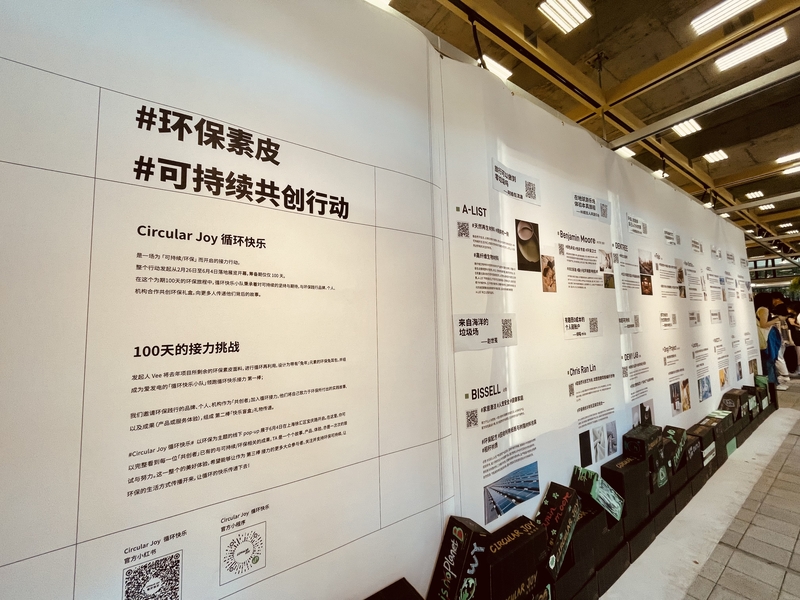
"This week, our best-selling brand is a French brand that mainly uses 3D printing technology to make recycled food packaging or plastic into vases, candlesticks, lighting fixtures, etc. Due to its unique design and bright colors, several products have already sold out." The manager told reporters.
In Europe, the long-term garbage classification system has given rise to a mature sustainable consumption market, which gives them strong competitiveness in product development and demand matching.
According to data from the French newspaper Le Monde, nearly half of the French people systematically classify their external packaging, and these discarded packaging will be further processed into primary materials such as plastic, cardboard, metal, and glass bottles, which will then be designed and produced before being reintroduced into the market.
Compared to others, sustainable consumer brands in China have generally been established for a relatively short period of time, and the sustainable materials used in their products are single. There is still a lot of room for improvement in product design and category richness.
The reporter randomly interviewed several consumers who came to 3RLABS and found that the willingness of consumers to pay for "sustainability" largely depends on whether the recycled materials are unique or whether the recycling technology has highlights.
Vivian purchased two pairs of socks from the Chinese brand PIU, and her focus is on the material source of these socks being corn fiber. Zeo has purchased a recycled fabric shopping bag, and the recycled nylon material will make the bag more durable.

"To some extent, every consumer of sustainable products is empowering the innovation and development of green brands," said Lisa, an investor who has long been interested in the field of sustainable consumer goods. As China's sustainable consumption gradually replaces the traditional "fast consumption" model, the green transformation of the production end driven by consumption will soon occur, and the changes in production will inevitably further promote the development of green consumption, which will be a positive cycle.
The appearance and price of recycled goods actually depend on the upstream supply chain of recycled materials.
On June 3rd, the Shanghai Sustainable Lifestyle Platform "Tonggengsheng" held an exhibition called "Sustainable and Fashionable", which was also a ordering event. Various environmentally friendly recycled fabrics were displayed in the exhibition hall for buyers to observe.
With the continuous development of the domestic supply chain, recycled fabrics have been able to achieve the same texture, touch, and pattern as traditional fabrics. Xiao Yang, the head of the Materials Department of Tongsheng, pointed to a fluorescent green vest and told me
Xiao Yang told reporters that currently, there are two main groups of people interested in purchasing environmentally friendly fabrics: multinational companies with ESG indicators, and emerging brands that advocate environmental protection concepts.
In the exhibition, fabrics made from recycled plastic particles are very popular. A purchaser told reporters that China has a complete supply chain of recycled plastic particles and stable prices, resulting in a variety of forms and colors of recycled fabrics; In addition, compared to recycled fabrics from textile waste, it appears to have more strength in dissemination, while compared to recycled fabrics from fruit peels, its cost is lower.

Recycled materials, where do they come from
So, where do these plastic particles come from?
At the Shanghai Fengxian Yingke Recycling and Environmental Protection Exhibition Hall, a European purchaser knocked on the "marble" column inside the exhibition hall and was surprised to find that the outer layer of the column was made of plastic. Here, wooden flooring, bamboo and rattan panels, sound-absorbing cotton for recording studios... Almost all materials that can be seen in daily life are "transformed" from recycled plastic.
They are recycled plastic particles before they transform.
Across from the exhibition hall is the production line of Yingke Recycling. On weekday afternoons, the production workshop is bustling with activity. After high-temperature melting, recycled plastic particles flow into different molds for integrated molding. Workers only need to sort and package the recycled boards in the final stage, and the plastic particles are processed into environmentally friendly picture frames or decorative materials, returning to the market.
In fact, recycled plastic particles have a wide range of uses, not only for making environmentally friendly picture frames and textile fabrics, but also as furniture panels, packaging boxes, office stationery, electronic product shells, and so on.

There are mainly two sources of reclaimed plastic particles from Enke, namely, discarded plastic foam and beverage bottles. It is reported that Yingke Recycling has a production capacity of processing about 150000 tons of waste plastics annually. These waste plastics are recycled and processed into recycled plastic particles, some of which become raw materials for other Yingke recycling products, and some are sold to downstream recycling enterprises.
However, for recycling companies, the difficulty of recycling waste plastics is greater than ordinary people imagine.
In daily life, people often refer to various plastic products as "plastics", but in the eyes of recycling enterprises, the classification of plastics is very detailed.
Taking a beverage bottle as an example, the plastic used for the bottle cap is PE or PP, the material for the bottle body is generally PET, and the material for the label is generally PVC. The molecular structures of the three plastics are different, and they cannot be mixed together during the recycling process, otherwise it will affect the performance of the recycled plastic.
In addition, the usage scenarios of plastics are diverse and complex, with over 10 different categories of over 100 types of plastics commonly found on the market alone. This means that precise classification of plastics as a single category alone would incur significant costs.
In addition, plastic is also easily contaminated, and impurities such as coatings, stickers, paper, metal, wood, etc. on the surface of plastic can greatly reduce its utilization rate. In the recycling stage, there is also a high requirement for the removal of plastic odors and the cleaning effect of internal substances.

For example, plastic paper that uses ink to print brand logos or slogans, and plastic bottles that use dyes will become non recyclable due to contamination from other substances.
Therefore, only by enabling mutual communication and effective connection between the production end and the recycling end, and forming a full industry chain of "recycling recycling utilization", can we better improve green recycling efficiency.
In fact, the quality and output of recycled plastic particles directly determine the development of recycling enterprises. In the recycling of waste plastics, in order to reduce the transportation and storage costs of plastics, Yingke Recycling has developed a plastic volume reduction machine, which can compress plastics to 1/50 and 1/90 of their original volume. In order to separate residues from waste plastics, a cleaning and recycling system and a wring machine have also been developed.
These garbage sorting related devices have helped more than 400 recycling points in over 50 countries worldwide significantly improve recycling efficiency and reduce recycling operating costs. With the advancement of technological innovation and the emergence of scale effects, the average unit price of recycled particles can be 20% -50% lower than that of new materials, which also makes the recycled plastic particles produced by Yingke have a higher cost-effectiveness.
However, surprisingly, the proportion of waste plastics recycled from China by Yingke Recycling is not high in its total recycling volume. The assistant to the chairman of Yingke Recycling told reporters that there are still difficulties in plastic recycling in China.
Firstly, the overall quantity is small. Although in the government led two networks integration project, the foam capacity reduction and density increasing machine of British Scientific Recycling has been deployed in several pilot cities for waste classification, compared with the huge plastic waste in China, the recycling volume of outlets is still small, which is not conducive to large-scale recycling.
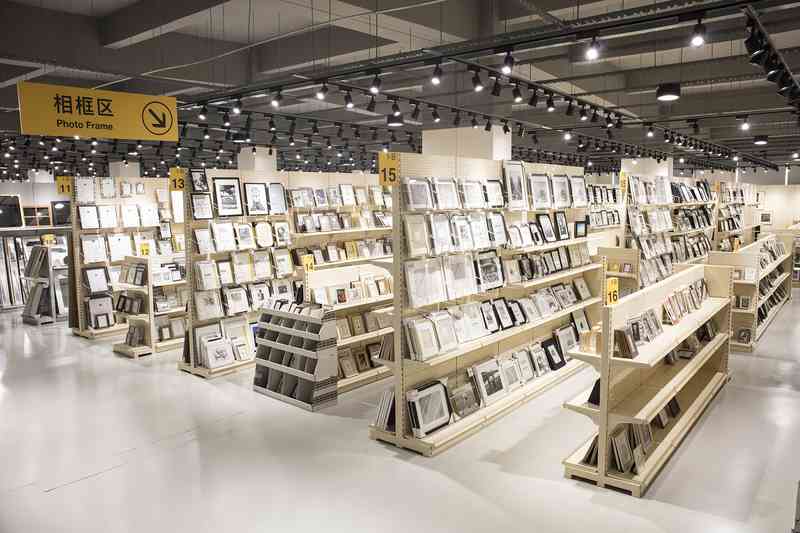
Secondly, the accuracy of plastic classification is low. Waste plastics are often mixed with other materials, and the recycling of composite packaging is difficult, and the cost of splitting, screening, and cleaning is also higher.
She gave the reporter an example: Japan's marine fishery is relatively developed, and the use of plastic foam related to the marine industry is also large, but they handled it very carefully. At the end, professional sorting equipment is equipped for fishing scenarios.
In addition, fishermen constantly learn and practice the method of classification and sorting, so the degree of plastic pollution is low. Recycling and environmental protection companies are also willing to invest relatively more funds in recycling.
In her opinion, recycling enterprises not only need to continue promoting refined recycling at the research and development level, expanding the types of recycling resources, and enhancing economies of scale, but can also try to establish environmental protection and recycling exhibition halls, hold activities such as bringing recycled materials into schools, and guide people to accurately classify plastic waste.
Design, how to empower regeneration
So, once the scale and precision of garbage classification are achieved, does it mean that the momentum of sustainable consumption will immediately emerge?
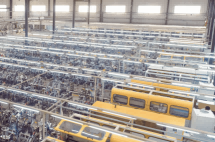
In fact, there is another important link between recycled materials and sustainable consumption - design.
On the 3rd floor of Building B of the Shanghai National Convention and Exhibition Center, there is a hidden world inside an inconspicuous entrance.
Many materials, such as recycled decorative panels from waste spinning, recycled bricks from construction solid waste, recycled plastic panels from fishing nets, flower and grass boards, recycled permeable tiles from waste porcelain, and recycled sound-absorbing panels from waste paper, are displayed alongside schematic diagrams of car interiors, decorative panels, furniture products, and more made from them.
But who will apply these new materials to people's daily lives?
Chen Dandan, the founder of Caijian, told Chen Dandan that she used to be a senior designer in the field of architecture. She found that in the construction industry, most designers have a more traditional understanding of materials, and few can create designs from a sustainable perspective based on the different characteristics of environmentally friendly materials.
Therefore, she decided to establish the sustainable materials brand "Caijian", which is a sustainable materials platform in the construction field. It not only allows designers to have a better understanding of sustainable materials, but also provides a showcase for recycled materials enterprises.
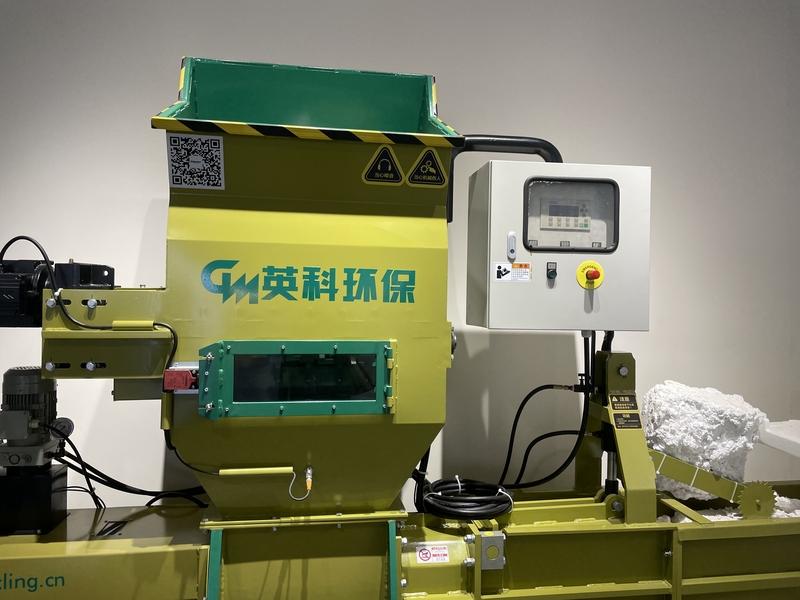
Chen Dandan told reporters that in early July, Vanke's latest project in Shanghai will use flower and grass boards made of plant straw as building decoration materials. This new material is not only low-carbon, environmentally friendly, and aesthetically pleasing, but also has a unique fragrance due to its material characteristics. "Cai Jian" participated as a designer throughout the project implementation process.
"At present, the recycling and reuse of household waste has entered the public eye relatively well, but in the field of architecture, designers still focus more on appearance, novelty, and internet celebrity index." Chen Dandan said.
In fact, if designers themselves lack awareness of sustainable concepts and understanding of sustainable materials, they will naturally not provide sustainable options for customers, making it difficult to form a green cycle in the construction industry and develop as upstream recycled building materials.
Application Cases of Biobrick Architecture
Chen Dandan told reporters that unlike everyday consumer goods, buildings themselves have a longer lifespan and use a greater amount of various resources. If designers can fully consider the issue of recycling and reuse during design and construction, the waste of resources in architectural design will be greatly reduced.
Therefore, the design has become an important part of shortening the regeneration cycle. Chen Dandan believes that whether it is industrial product design or architectural design, only by providing sustainable solutions when demand arises can every subsequent step reduce reuse costs and shorten the reuse cycle.

Chen Dandan gave an example that in the sustainable store plan provided by "Caijian" for a certain chain brand, whether the building materials are easy to dismantle and whether they can be reused is considered an important indicator. In this plan, the decorative materials of a single store can be continuously reused. The brand has achieved a win-win situation of social and economic benefits.
At present, there are not many examples of using sustainable design thinking for overall decoration in the construction industry. 3RLABS can be considered as one of the cases.
Paul, who is designing sustainable stores for 3RLABS, believes that sustainable space design includes two levels: one is that the materials themselves have sustainable properties, such as tiles, wooden boards, cans, recycled plastics, etc; Another aspect is the sustainability of materials in use. For example, there are no fixed display points or partitions in the space, and activity props can be flexibly changed and assembled, which will reduce material losses during space updates.
Sissy, the founder of Shuoyu, also holds a similar view. She believes that design innovation can not only shorten the regeneration cycle, but also maximize the demand for green consumption. "On the market, traditional recycled plastics mainly imitate traditional materials, while Shuyu has made bold attempts to make completely different patterns and textures the green label of the product."
Recycled plastic decorative exterior walls
From the research and development project to the production and use of recycled plastic sheets, it has taken a full two years. This process not only requires engineers to overcome technical difficulties, but also requires designers to grasp the trend in the process foundation and innovate the product design.
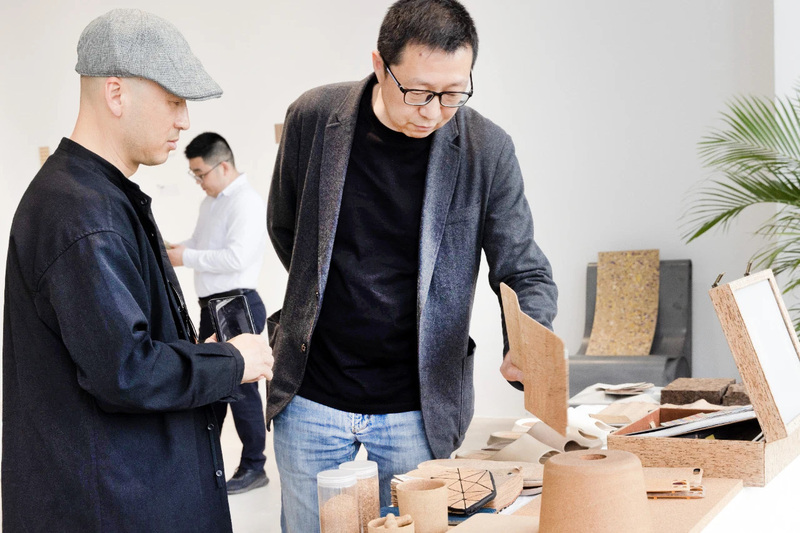
"When consumers are first surprised and have a desire to understand it when they see it, the concept of green consumption quietly enters their hearts," Sissy said.
The circular economy is like a circle, from design to production, from consumption to recycling and reuse, each node is interconnected, and the weakness of any link will also be reflected in the entire industrial chain.
As more and more consumers and sustainable brands start to consider issues from a "circular" perspective, production and design methods will change, as well as ways of recycling and reusing waste. This "fashion" will also bring benefits to the entire green economy industry chain.
【 Expert Monitoring 】 Garbage Classification 2.0: Moving towards Refinement and Scenarioization
Liberation Monday: Recently, you and your team released a research report on the construction of a disposable paper cup recycling system after consumption. Do you have any new findings?
Du Huanzheng: For an international metropolis like Shanghai, we cannot underestimate the "sub sectors" of garbage. In fact, there are a large number of occasions in cities that require the use of disposable paper cups, which often appear together with coffee and milk tea, and these disposable consumables account for nearly 60% of Shanghai's garbage increment.

The study found that paper cup recycling has a good carbon reduction potential, with 68% carbon reduction per recycling. Moreover, the market prospect of its renewable products is broad. Through the recycling of items that are closely related to everyone's life, consumers can be subtly driven to participate in garbage classification and green product purchase. Looking from a small place and starting from a small place, this may become an opportunity to promote the refinement of garbage classification.
However, for disposable paper cups and other types of waste, the response at the recycling end still needs to be strengthened. The refinement of garbage classification not only requires a change in people's mindset, but also requires convenience in infrastructure. In addition, for "niche" garbage, there is a greater need for large-scale social recycling, which requires technological innovation, simplified recycling processes, and a balance between recycling efficiency and costs.
At present, garbage classification needs to gradually transition from 1.0 to 2.0, which is the stage of refined classification. This requires targeted resource utilization of the classified products, divided into categories, steps, and scenarios, and the construction of a circular system for each type of product. Afterwards, the resource utilization of waste such as disposable paper cups and disposable plastic packaging boxes can be gradually promoted.
Liberation Monday: The key to developing a circular economy lies in building a closed loop of material production, consumption, and recycling. What do you think is the key to forming a "closed loop"?
Du Huanzheng: Firstly, renewable resources have the attribute of quasi public goods and require government policy support and management, and can compensate for the missing parts of the value chain through policy incentives, innovative management systems, and other means.
Secondly, the development of the resource regeneration industry cannot be separated from technological innovation. Both front-end sorting and high-value utilization at the end require technological innovation to promote the landing of conventional technology applications and the development of disruptive technologies.
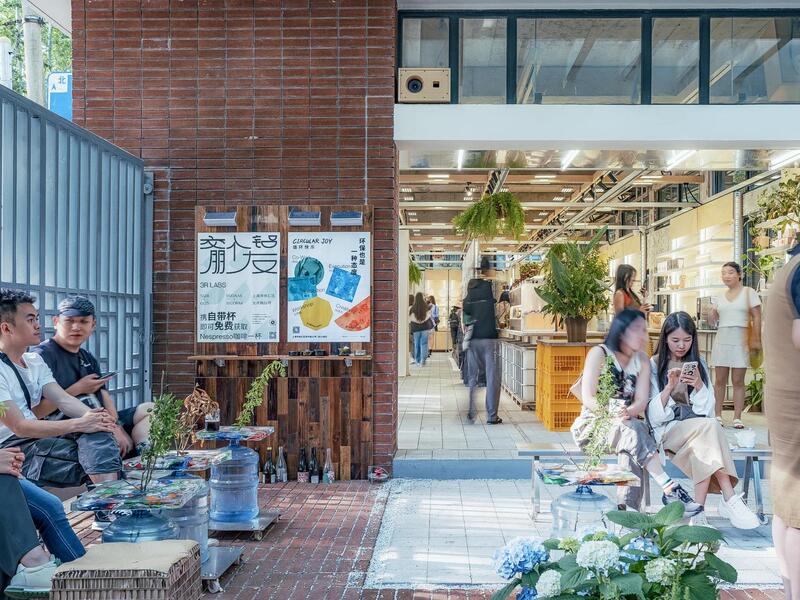
In addition, there should be a business model that can run smoothly. On the one hand, it is necessary to reduce the cost of front-end recycling and disposal through education, innovation in recycling models, and big data empowerment. On the other hand, it is to increase the added value at the end, such as achieving high-value utilization through brand premium and design premium.
On these foundations, promoting the construction of a closed-loop system that combines policy, technology, and business models is necessary to provide local governments and brand enterprises with categorized and scenario specific waste system solutions, and to help build a waste free and circular city.
Liberation Monday: Currently, is there a high level of recognition among consumers towards recycled products? How to enhance consumer awareness, interest, and demand for remanufactured products?
Du Huanzheng: In recent years, the public's recognition of recycled products is gradually increasing. Both the Shanghai May 5th Shopping Festival Green Consumption Season and the attention of many consumer goods companies to resource recycling indicate that green consumption is becoming a new trend among the public.
In the future, we need to continue to enhance consumer awareness, interest, and demand for remanufactured products. On the one hand, we still need to strengthen publicity and education, and continue to promote the concept of sustainable living. Let the government, renewable enterprises, social organizations, and others continuously promote the "new fashion" of sustainable living, starting from key groups and driving more target consumer groups.


